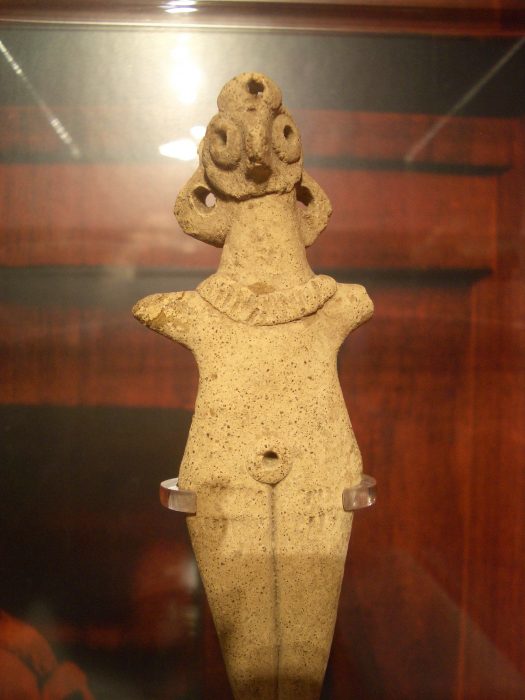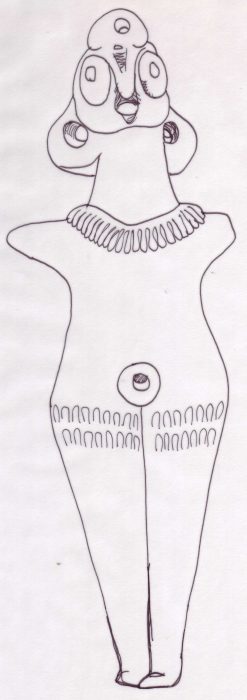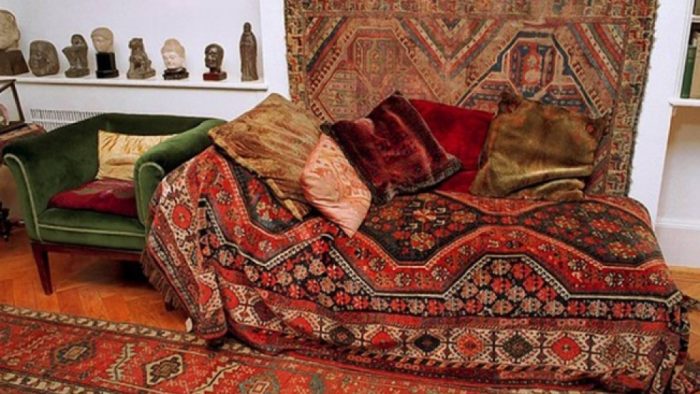Freud’s Ishtar
This painting of the Babylonian goddess Ishtar is one of my twelve smaller gilded paintings which together form Significantly Freud: Icons for a Jewish Atheist, representing my favourite twelve artefacts from the private collection of Sigmund Freud.
Ishtar is a Babylonian fertility deity, associated with the planet Venus. She was once adorned with jewellery and may have been a grave offering.

Die Fruchtbarkeit (Fertility)
The red script Die Fruchtbarkeit translates as “Fertility”. This signifies the role of women as creators, objects of worship, sources of the mystery of life.

Freud’s Ishtar was one of the oldest statues he owned. The statue is only about 120 mm high. It was from the Middle Bronze Age, about 2000 BC in Syria. It is a female terracotta figure from 2000 – 1750 BC.

One of my original sketches for this painting.
In the Near East, Ishtar was the mother of gods and humans, a protector of marriage and mothers. People worshiped Ishtar as the goddess of sexual love and fertility. Ishtar was also a fierce warrior goddess, who could make even the gods tremble in fear. As a storm goddess, she could bring rain and thunder.
In one myth, Ishtar has to pass through 7 gates and remove a symbol of clothing or jewelry at each one. She is naked by the time she gets to the 7th gate.

The colour of the frame and desktop in this painting was inspired by the beautiful burnt red of this geometric rug design and also the red leather on the top of Freud’s desk.